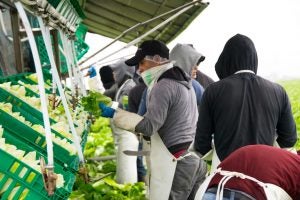One of the benefits of being a nation rich in ethnic diversity is our exposure to many languages and cultures. Cultural awareness is a valuable skill to have because it allows us to be aware of those that exist outside our own and opens opportunities in traveling and establishing all sorts of relationships. While the United States does not have an official language at the federal level, English is the most widely spoken.
According to the U.S. Census Bureau, roughly 8 percent of people 5 years or older who reside in the U.S. speak English less than well compared with their mother tongue. With the English language used as the default for the nation’s public eyes, most things in print are only readily available in English. This tends to be especially problematic for ag laborers who need urgent information on certain agricultural equipment.
Approximately 62 percent of the nation’s farmworkers use Spanish as their dominant language, while pesticide safety labels tend to be available only in English. Sometimes there will be the occasional single warning word printed in Spanish or text that translates to, “If you do not understand the label, find someone to explain it to you in detail.” This is vital from a safety standpoint because those working with such pesticides need to know up front how to handle the chemicals and what to do in case of an emergency — there’s not always enough time to find someone who may be able to translate.
A study from BMC Public Health shares that the agriculture industry is responsible for about 90 percent of pesticide use. This combined with inability to understand safety labels puts a large percentage of Latine agricultural laborers at high risk of danger.
While the U.S. Environmental Protection Agency has worked to protect farm workers from pesticides, not a lot has been done about the issues surrounding language accessibility.
However, a May 2022 petition from the Center for Biological Diversity advocating for bilingual labels reignited this topic. Critiques against bilingual labels often deal with how long safety labels and sometimes safety data sheets are in the first place. Some argue that QR codes could be a feasible solution to this.
Other things that can be done include having different language versions of the same information available to print from the manufacturer’s website, having employers provide better training to their farm workers on personal protective equipment and for the handling of their different pesticides, and more often selecting alternative forms of pest management instead of crop protection chemicals.
Yet the issue surrounding language accessibility to agricultural technology doesn’t just stop at agrichemicals — the issue extends to farm machinery, GIS and mapping tools, and power tool safety. This can open monolingual farm workers up to more dangers than just chemical exposure.
But farmworkers are not the only ones that struggle with language accessibility in agricultural tools and technology. Even the everyday non-English speaking gardener can struggle finding what they need to be safe and efficient.

Some people think that these farm workers should take the time to learn English instead. However, this is not a feasible option for many people. This assumes that all farm workers have people at home they can practice English with, that they can access English for Speakers of Other Languages classes or that they have the mental and emotional capacity to dedicate themselves to learn a second language at an age where language learning becomes difficult (after the age of 18).
Additionally, 10 percent of Indigenous-Latine farm workers don’t speak Spanish either, putting them at a greater disadvantage.
The already diverse United States will only continue to grow in its language diversity. That means our society needs to be ready to adapt with the changing trends in culture and language. This includes ensuring our high-risk danger laborers have the resources available to safely and efficiently work.
More work in ag policy needs to be done to break the barriers in language accessibility. But more attention needs to be placed in it first, and it starts with the people to place who pressure legal officials.
Saul Reyes serves as the 2022 American Farmland Trust Agriculture Communications Intern at AGDAILY, with a focus on helping to amplify diversity and minority voices in agriculture. An FFA alum, Reyes is a graduate of California State University-Chico and double majored in plant and soil science and multicultural and gender studies, while minoring in intersectional Chicanx/Latinx studies and public relations. He can be found on Twitter @sreyes710.





